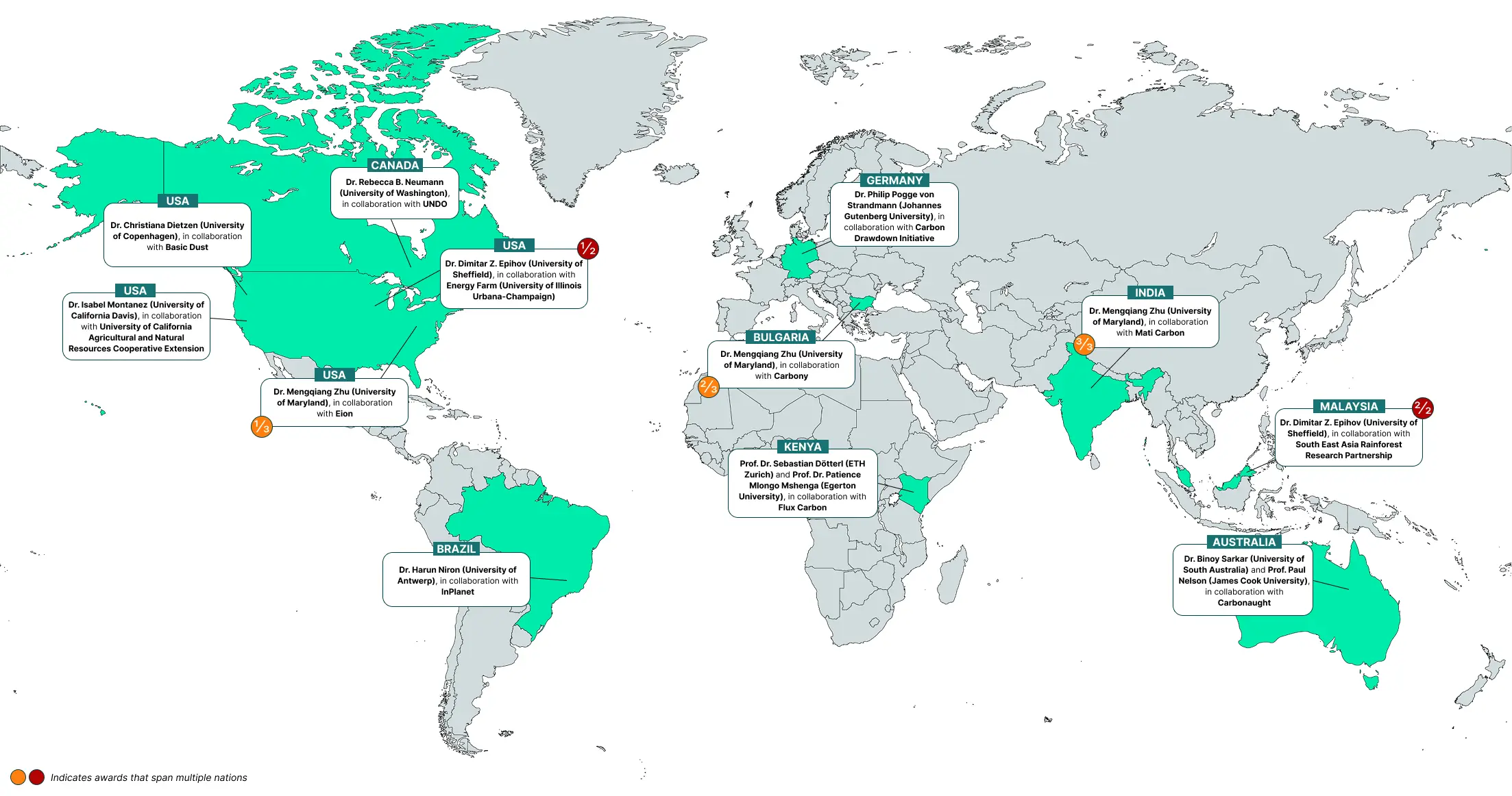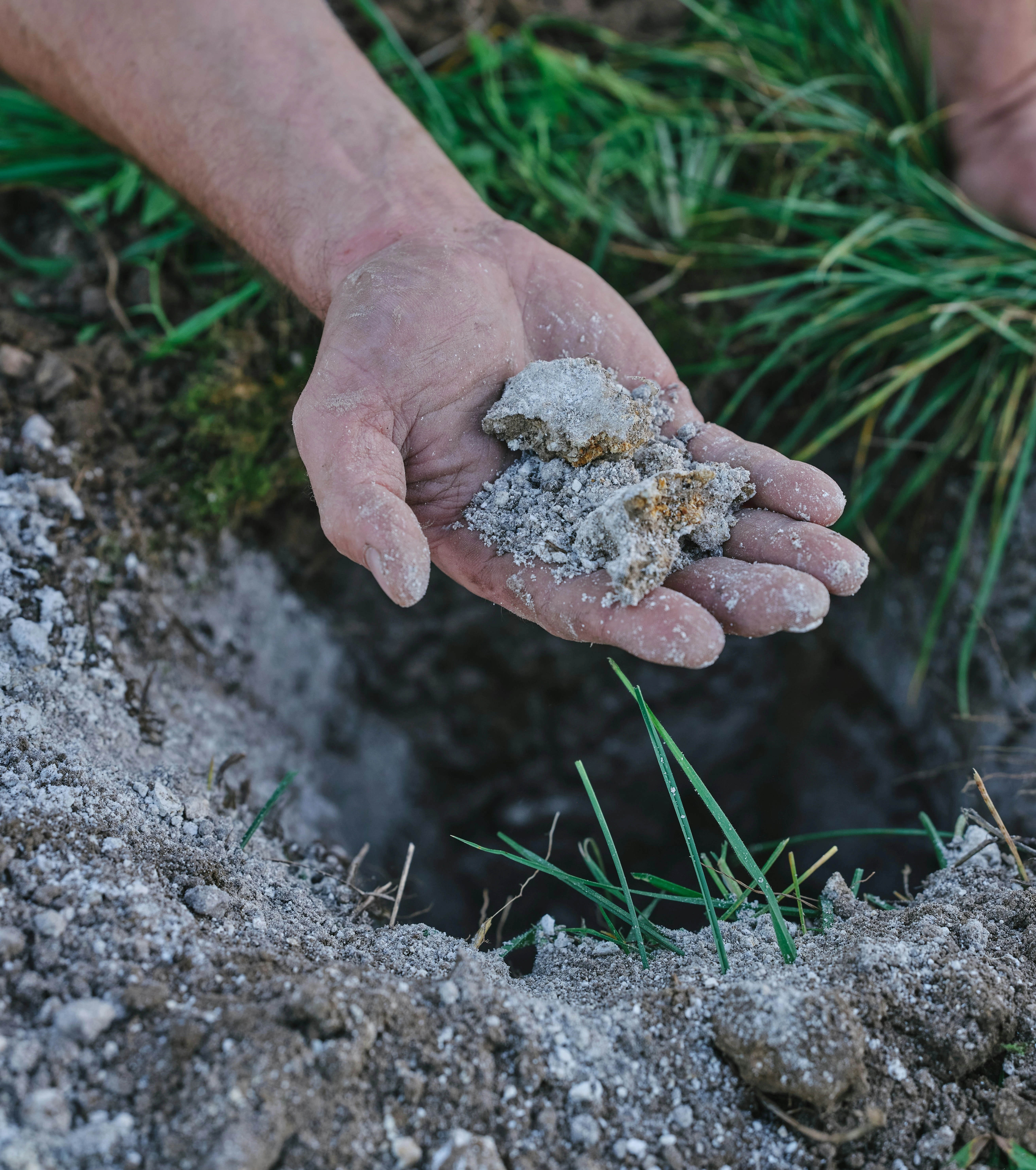ERW Field Data Partnership Grant Awardees
In collaboration with the Grantham Foundation, Google, and Frontier, Cascade is excited to announce the awardees for our ERW Field Data Partnership Grants: over $1.2M in funding across 9 projects focused on addressing key research priorities in enhanced rock weathering (ERW).
This funding initiative is intended to accelerate ERW science via a "piggybacking" model, where academic researchers layer scientific exploration onto existing ERW deployments. Together, these nine individual projects tackle several scientific priorities in ERW, including secondary phase formation, soil organic carbon stock changes, and the flow of weathering products. Each partnership also commits to making data available via the ERW Data Quarry↗ and scientific publication, ensuring that more researchers have access to high quality ERW field data. The projects span multiple sites in nine different countries, covering a wide range of climate, soil, and crop types.

